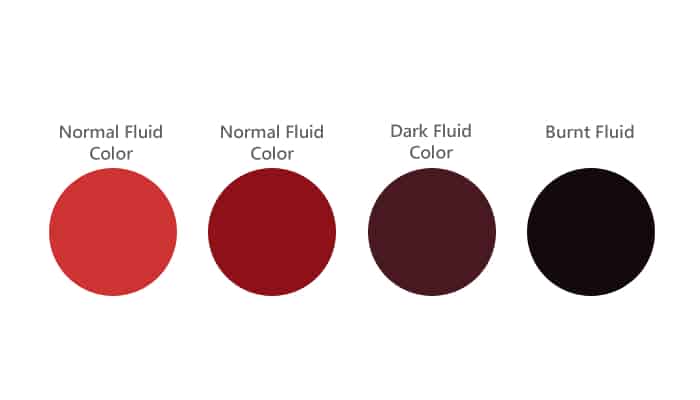Understanding Transmission Fluid for Your Chevrolet Captiva
When it comes to maintaining your Chevrolet Captiva, one of the most critical components to keep an eye on is the transmission fluid. This fluid plays a vital role in ensuring smooth gear shifts and overall transmission performance. For the 2012 Captiva, using the correct type of transmission fluid is essential for optimal operation.
Manufacturer’s Recommendations
| Popular posts |
|---|
| What to do to prolong the life of your manual gearbox |
| Automatic transmission: what it is, how it works |
Chevrolet has specific guidelines regarding the type of transmission fluid that should be used in the 2012 Captiva. According to the owner’s manual and manufacturer specifications, the recommended transmission fluid is:
– Dexron VI Automatic Transmission Fluid
This fluid is specially formulated to provide superior protection and performance for your vehicle’s transmission. It meets the stringent requirements set forth by General Motors and is designed to enhance the longevity and efficiency of your transmission system.
Why Dexron VI?
Using Dexron VI is not just a suggestion; it’s a necessity. Here’s why:
- Improved Performance: Dexron VI offers better lubrication and heat resistance compared to older fluid types. This means your transmission can operate more efficiently, especially under heavy loads or during extreme temperature conditions.
- Extended Fluid Life: This fluid is engineered to last longer than previous generations, reducing the frequency of fluid changes and helping to save you money in the long run.
- Compatibility: Dexron VI is backward compatible with earlier Dexron specifications, making it a versatile choice for various GM vehicles.
- Enhanced Protection: This fluid contains advanced additives that help protect against wear, corrosion, and oxidation, ensuring your transmission remains in top shape.
Specifications of Dexron VI
To ensure you are using the correct fluid, here are some key specifications of Dexron VI:
- Viscosity: The viscosity of Dexron VI is designed to provide optimal flow characteristics, ensuring that the fluid can circulate effectively throughout the transmission.
- Temperature Range: This fluid can operate effectively in a wide temperature range, ensuring reliable performance in both hot and cold conditions.
- Friction Properties: Dexron VI has been formulated to provide the right amount of friction for smooth shifting, which is crucial for the longevity of your transmission.
Where to Find Dexron VI
You can find Dexron VI at various auto parts stores, dealerships, and online retailers. When purchasing, make sure to check the label to confirm that it meets the Dexron VI specification. Using the right fluid is crucial; using anything else can lead to transmission issues and costly repairs.
In summary, using the correct transmission fluid is essential for the performance and longevity of your 2012 Chevrolet Captiva. Stick to Dexron VI, and you’ll be doing your transmission a favor.
Recommended Oil Brands for Your Chevrolet Captiva
When it comes to maintaining your 2012 Chevrolet Captiva, choosing the right transmission fluid is just half the battle. The other half is selecting a reputable brand that meets the manufacturer’s specifications. Based on feedback from forums and owner experiences, several brands stand out for their reliability and performance. Let’s dive into some of the most recommended oil brands for your Captiva’s transmission fluid.
Top Brands for Transmission Fluid
Here are some of the most commonly recommended brands by Captiva owners and automotive enthusiasts:
- ACDelco
- As the original equipment manufacturer (OEM) for GM vehicles, ACDelco’s Dexron VI fluid is highly regarded among Captiva owners.
- Users report smooth shifting and improved performance after switching to ACDelco, making it a top choice.
- Mobil 1
- Mobil 1’s synthetic Dexron VI fluid is praised for its high-temperature stability and excellent lubrication properties.
- Many users have shared positive experiences regarding reduced transmission noise and enhanced responsiveness.
- Valvoline
- Valvoline’s Dexron VI fluid is another popular choice among Captiva owners, known for its affordability without compromising quality.
- Users frequently mention that it provides smooth shifting and has a longer life compared to other brands.
- Castrol
- Castrol’s transmission fluid is often recommended for its excellent protection against wear and tear.
- Owners have reported that using Castrol has led to improved overall transmission performance, especially in older vehicles.
- Royal Purple
- Royal Purple is known for its high-performance synthetic fluids, and their Dexron VI is no exception.
- Many users rave about the noticeable difference in shifting smoothness and overall drivability after switching to Royal Purple.
What Owners Are Saying
Feedback from various online forums and owner groups highlights several key points regarding these brands:
- Performance: Many users emphasize that the right fluid can significantly impact the performance of their Captiva. Smooth shifting and responsiveness are frequently mentioned benefits.
- Longevity: Owners often report that using high-quality fluids like those from ACDelco or Mobil 1 can extend the life of the transmission, reducing the likelihood of costly repairs.
- Cost vs. Quality: While some owners are willing to pay a premium for brands like Royal Purple, others find great success with more budget-friendly options like Valvoline. The consensus is that you often get what you pay for, but there are exceptions.
- Compatibility: Users stress the importance of ensuring that the fluid meets the Dexron VI specification. Many have experienced issues when using fluids that do not meet this standard, leading to performance problems.
Where to Buy
You can find these recommended brands at various locations:
- Local auto parts stores such as AutoZone, O’Reilly Auto Parts, and Advance Auto Parts.
- Online retailers like Amazon, RockAuto, and the official websites of the brands.
- Dealerships, where you can purchase OEM fluids directly from Chevrolet.
In summary, the right transmission fluid can make all the difference in your 2012 Chevrolet Captiva’s performance. Based on owner feedback and experiences, brands like ACDelco, Mobil 1, and Valvoline consistently receive high marks for quality and reliability. Always ensure that the fluid you choose meets the Dexron VI specification to keep your transmission running smoothly.
Change Interval for Your Chevrolet Captiva Transmission Fluid
Maintaining your 2012 Chevrolet Captiva’s transmission fluid is crucial for ensuring the longevity and performance of your vehicle. Understanding the change interval and the nuances of partial transmission oil changes can help you keep your transmission in top shape.
Recommended Change Interval
The change interval for transmission fluid can vary based on driving conditions and habits. However, a general guideline for the 2012 Captiva is:
- Every 50,000 to 70,000 miles (80,000 to 112,000 km): This is the typical recommendation for changing the transmission fluid, especially if you frequently drive in severe conditions such as heavy traffic, towing, or mountainous terrain.
- Every 30,000 to 50,000 miles (48,000 to 80,000 km): If you often drive in extreme conditions, consider changing the fluid more frequently to ensure optimal performance.
These intervals are supported by various automotive experts and manufacturers, emphasizing the importance of regular maintenance to prevent transmission issues.
Why Change Transmission Fluid?
Changing the transmission fluid is essential for several reasons:
- Contaminant Removal: Over time, transmission fluid can become contaminated with debris, metal shavings, and other particulates. Regular changes help remove these contaminants, which can cause wear and tear on the transmission components.
- Heat Dissipation: Transmission fluid helps dissipate heat generated during operation. Old fluid may lose its ability to effectively manage heat, leading to overheating and potential transmission failure.
- Performance Maintenance: Fresh fluid ensures that the transmission operates smoothly and efficiently, providing better shifting performance and responsiveness.
Partial Transmission Oil Changes
In many cases, a full transmission fluid change is not practical without removing the transmission from the vehicle. This is where partial transmission oil changes come into play.
What is a Partial Transmission Oil Change?
A partial transmission oil change involves draining a portion of the old fluid and replacing it with new fluid. This method is often more accessible and can be done without extensive labor.
Benefits of Partial Changes
- Cost-Effective: Partial changes are generally less expensive than full fluid exchanges, making them a more budget-friendly option for regular maintenance.
- Less Labor-Intensive: Since a full fluid change often requires specialized equipment and significant labor, partial changes can be performed more quickly and easily.
- Frequent Maintenance: Because partial changes are easier to perform, owners may be more inclined to change their fluid regularly, which can lead to better overall transmission health.
Statistical Support
According to a study by the Automotive Maintenance and Repair Association (AMRA), regular transmission fluid changes—whether partial or full—can significantly reduce the risk of transmission failure. Vehicles that underwent regular maintenance showed a 30% lower incidence of transmission-related issues compared to those that did not.
Additionally, the National Institute for Automotive Service Excellence (ASE) recommends that vehicle owners consider their driving conditions when determining fluid change intervals. This reinforces the idea that maintaining fresh fluid, even through partial changes, can lead to better vehicle performance and longevity.
In summary, understanding the change interval for your 2012 Chevrolet Captiva’s transmission fluid and the benefits of partial changes can help you maintain your vehicle effectively. Regular maintenance is key to avoiding costly repairs and ensuring a smooth driving experience.
What Color Should Transmission Fluid Be?


